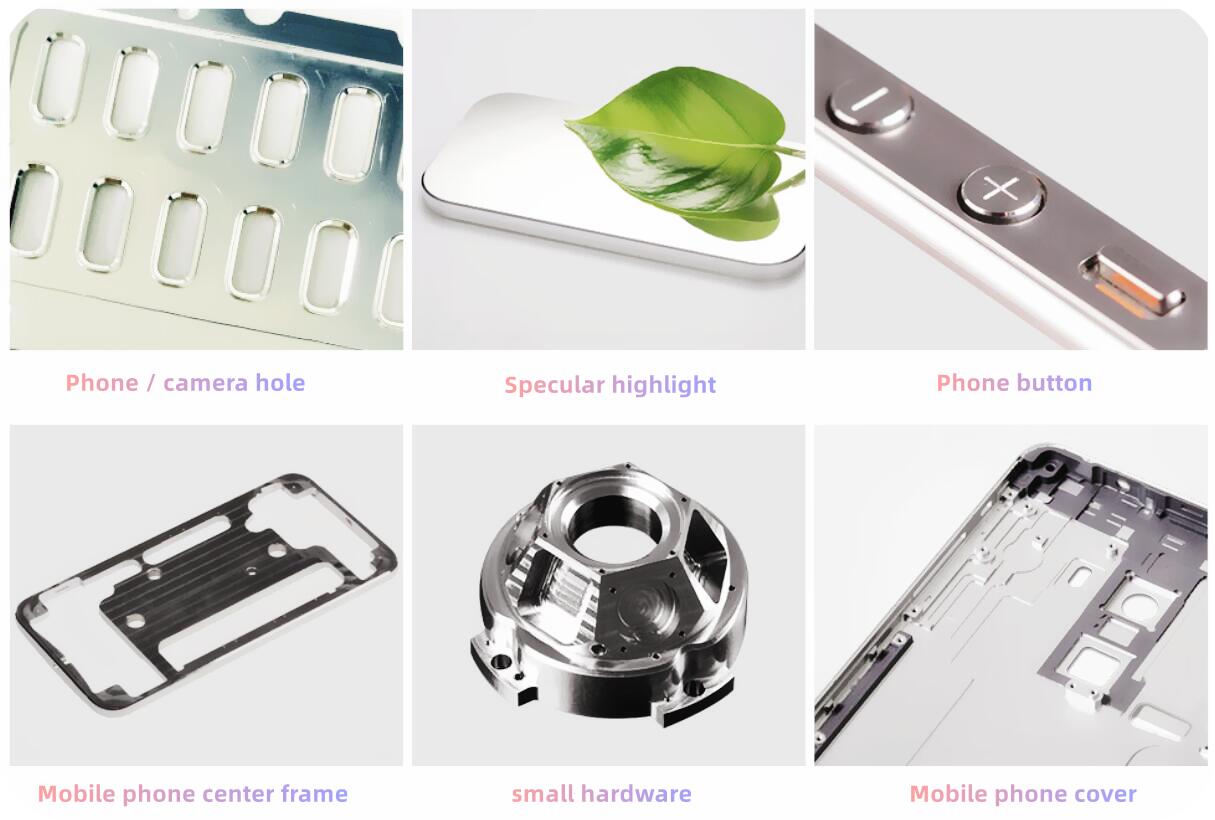
With the development of science and technology and continuous innovation, the market's processing requirements for 3C hardware products are also gradually improving for product appearance quality and dimensional processing accuracy; higher evaluation standards exist. Currently, most manufacturers in the CNC machining process control 3C hardware shell; whether it is processing quality or efficiency, there are great production problems: (1)The highlight effect is poor :(2) the size edge is obvious: and (3) the processing dimension is low precision, which requires the cutting tools of the 3C processing industry to be constantly updated and constantly innovative.
Because the 3C industry (Computers, Communications, and Consumer Electronics) constantly evolves in the fast-paced world of technology. As new products and devices are introduced, manufacturers are in a perpetual race to stay ahead of the competition. One crucial aspect of this race is the development of cutting-edge tools and technologies, particularly in the realm of PCD (Polycrystalline Diamond) tools. This article explores the latest innovations in PCD tools and how they are revolutionizing the 3C industry.
The 3C industry has experienced remarkable growth, driven by the ever-increasing demand for innovative electronic devices. To keep up with this demand, manufacturers are constantly seeking ways to improve their manufacturing processes, and PCD tools have emerged as a game-changer in this regard. These tools are known for their exceptional hardness, wear resistance, and thermal conductivity, making them ideal for precision machining in the 3C industry.
PCD tools are engineered using a combination of synthetic diamond particles and a cemented carbide substrate. The diamond particles are carefully bonded together under high pressure and temperature, resulting in a tool that possesses remarkable properties. Due to their unique composition, PCD tools offer a level of performance that is unparalleled in traditional cutting tools.
One of the key advantages of PCD tools is their exceptional precision and durability. The hardness of diamonds allows these tools to maintain their sharp cutting edges for an extended period, resulting in consistent performance and high-quality finished products. This level of precision is crucial in the 3C industry, where even the smallest imperfections can significantly impact device functionality.
The surface finish of electronic devices plays a crucial role in aesthetics and functionality. PCD tools provide superior surface finishes thanks to their excellent wear resistance and low friction properties. By utilizing PCD tools, manufacturers can achieve smooth and flawless surfaces, enhancing the overall user experience and product quality.
Heat dissipation is a critical factor to consider in the manufacturing process of electronic components. PCD tools offer exceptional thermal conductivity, allowing efficient heat dissipation during machining operations. This feature reduces the risk of heat-related damage to the workpiece and improves the tool life, resulting in cost savings for manufacturers.
The 3C industry involves working with various materials, including metals, ceramics, and composites. PCD tools are renowned for their versatility and can easily machine these diverse materials. Whether aluminum, stainless steel, or even delicate electronic components, PCD tools allow manufacturers to tackle various machining tasks without compromising quality.
In the highly competitive landscape of the 3C industry, cost optimization and productivity are crucial factors for success. PCD tools offer significant advantages in this regard. Their long tool life and high cutting speeds reduce downtime for tool changes and increase productivity. Additionally, the high precision and surface finish achieved by PCD tools eliminate the need for secondary operations, further streamlining the manufacturing process and reducing costs.
As the world becomes more conscious of environmental sustainability, the 3C industry also seeks eco-friendly manufacturing solutions. PCD tools contribute to this goal by reducing material waste and energy consumption. Their extended life means fewer tool replacements, resulting in less waste generation. Furthermore, the efficient machining capabilities of PCD tools require lower cutting forces, thereby reducing energy consumption and minimizing the environmental impact.
While PCD tools offer numerous benefits, they are not without their challenges and limitations. For instance, the initial cost of PCD tools can be higher than traditional cutting tools. However, the long-term cost savings from their extended tool life often outweigh this initial investment. Additionally, PCD tools are more brittle and sensitive to improper handling or excessive feed rates. Manufacturers must implement proper tool management and operator training to mitigate these challenges effectively.
The future of PCD tool innovations in the 3C industry looks promising. Researchers and manufacturers continuously work on enhancing the performance and capabilities of PCD tools. Some emerging trends include the development of hybrid PCD tools that combine the benefits of PCD with other advanced materials, further improving tool life and efficiency. Additionally, advancements in coating technologies are being explored to enhance the wear resistance and performance of PCD tools.
PCD tool innovations have revolutionized the 3C industry, enabling many manufacturers to meet the growing demand for high-quality electronic devices. With their exceptional precision, durability, and versatility, PCD tools have become indispensable in manufacturing. The benefits of improved surface finish, efficient heat dissipation, and cost optimization make PCD tools an invaluable asset for manufacturers aiming to stay ahead in this rapidly evolving industry.
Contact: Nina Qiao
Phone: 86-13526572721
E-mail: cutting@zy-superhardtools.com
Whatsapp:86-13526572721
Add: AUX Industry,Zhengzhou City,Henan Province,China
We chat
